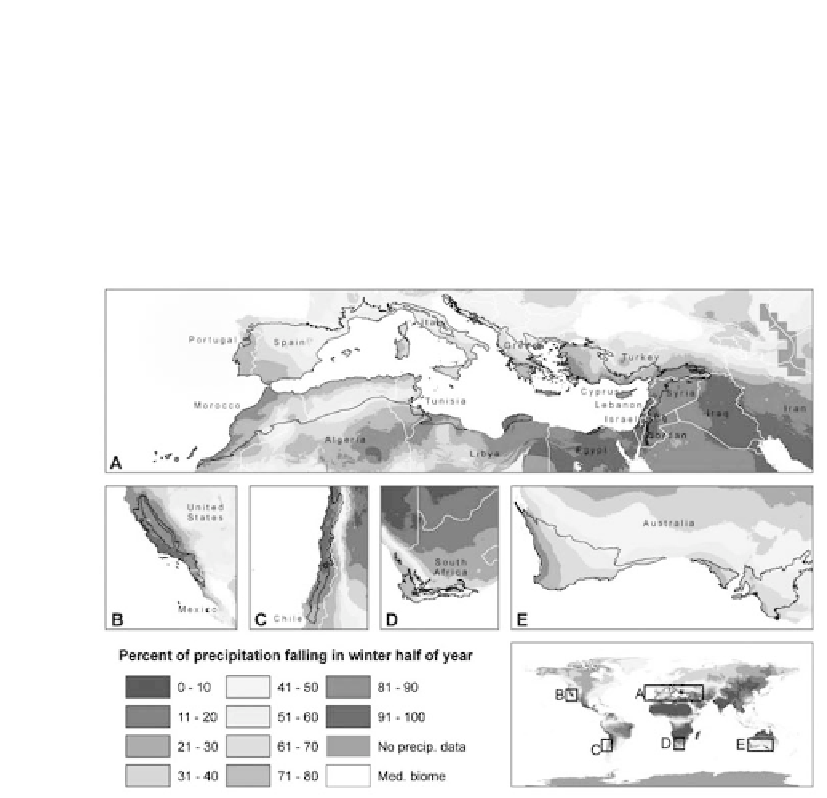Environmental Engineering Reference
In-Depth Information
of high modeled endemic plant richness in the California Floristic province [14]. In
South Africa, an analysis of both modeled and observed plant richness shows the area
identifi ed in the current MCE in the Western Cape as a hotspot [26]. This correlation
between areas of high plant richness and the MCE does not diminish the need for
conservation action in all areas of the mediterranean biome, but it does provide sup-
port for the theory that the core mediterranean climate is an important driver of plant
endemism and diversity, and that changes in climate could threaten the survival of
these endemic plants.
Figure 5.
Percentage of precipitation falling in the winter half of the year from the WorldClim
dataset.
The depiction of the mediterranean (med.) biome is from Olson et al. [2] and is provided
to show areas that are often considered part of the mediterranean biome but have less that 65% of
the precipitation falling in the winter half of the year, and thus are not included in the current MCE.
Across the entire mediterranean biome, most of the 23 AOGCMs project a minor
increase in the MCE, with signifi cantly large increases in some regions, and signifi cant
decreases in others. Not surprisingly, the physical characteristics in each region help
to explain some of the disparity between areas of contraction and expansion. High
topographic diversity and contiguous land toward the nearest pole provide room for
the expansion of the MCE in the US, Chile, Argentina, Greece, Turkey, Spain, and
Portugal. In South Africa, there is topographic relief so the MCE can retreat upslope
into the Western Cape Fold Mountains, but there is no contiguous land toward the
South pole cutting off future expansion of the MCE. Similarly in Morocco, the Atlas
Mountains provide topographic diversity, but the Mediterranean Sea blocks expansion
















Search WWH ::

Custom Search